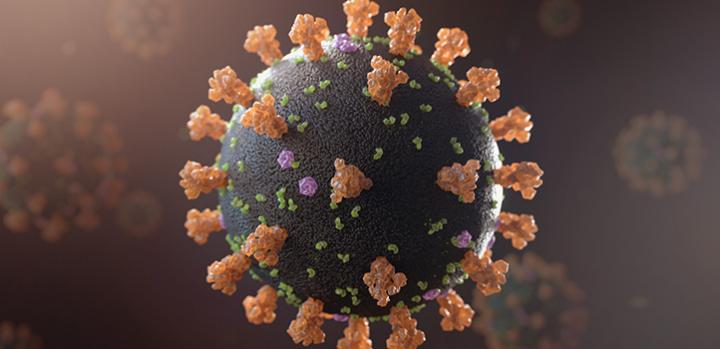
Credit: © KAUST; Xavier Pita
Understanding any similarities between SARS and COVID-19 inflammation could help in a clinical setting. A protein in the viruses causing COVID-19 and SARS is almost identical. Researchers propose testing if targeting COVID-19 with FDA-approved drugs, already tested in mice infected with SARS, could improve the outcomes for COVID-19 patients experiencing severe respiratory symptoms.
The finding was a collaborative effort from teams at KAUST following a comparison of Betacoronavirus genomes. “We have long-standing expertise in analyzing genomic data at KAUST’s Computational Bioscience Research Center,” says molecular biologist, Takashi Gojobori.
Gojobori, Carlos M. Duarte and a team of scientists compared the genomes of 24 Betacoronaviruses, including four SARS-CoV-2 viruses, which causes COVID-19. Two of the four were sequenced in the United States, while the other two were sequenced in China.
“SARS-CoV-2 appears to have recently evolved from other related Betacoronaviruses, such as the ones causing SARS and Middle East respiratory syndrome (MERS),” explains Intikhab Alam, first author of the study. “We wanted to understand the genetic make up of SARS-CoV-2. Seeing what has changed might help find ways to detect the virus and understand its rapid spread. Seeing what remains conserved between these viruses might help predict if therapeutic approaches developed for other Betacoronaviruses could work on SARS-CoV-2,” he says.
Their genomic comparisons followed by structural analyses found that a small protein that extends across the viral membrane, called envelope protein E, is almost identical in SARS-CoV-2 and the SARS virus (called SARS-CoV-1).
A molecular component of this protein in the SARS virus helps trigger the release of inflammation-causing substances in its host. This inflammatory reaction causes fluids to accumulate in the lungs resulting in breathing difficulties, a condition called acute respiratory distress syndrome. Scientists studying the SARS virus have found that this reaction can be inhibited in mice by FDA-approved drugs. “Drugs that inhibit the envelope protein E of previous SARS viruses should also block the protein in COVID-19,” says Alam. “Even though these drugs won’t stop the virus from spreading, we hope they could attenuate or prevent acute respiratory distress syndrome and help save lives.”
###
The team is now looking for partner hospitals in Saudi Arabia to conduct trials of these drugs. They also aim to use their data to help efforts toward designing an effective vaccine. Their data is publicly accessible on their Betacoronavirus Pangenome Database. Like other research groups, they are openly sharing early research related to COVID-19 with the World Health Organization.
Media Contact
Carolyn Unck
[email protected]
Related Journal Article
http://dx.




